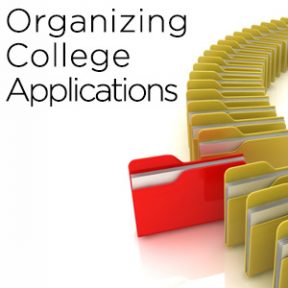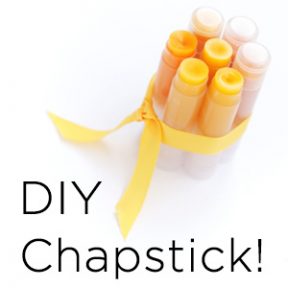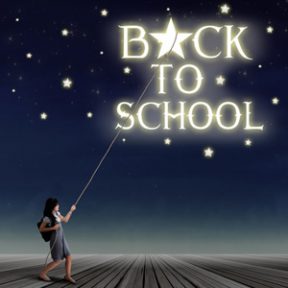 Having lived most of my life in Malibu and Santa Cruz, I’ve never felt like I actually needed air conditioning. Until now, that is.
Having lived most of my life in Malibu and Santa Cruz, I’ve never felt like I actually needed air conditioning. Until now, that is.
You would think that beach communities wouldn’t need AC but as our climate is changing, so are what we used to consider “normal” weather patterns. I wasn’t planning on using this as a CLIMATE CHANGE platform, but here we are; it’s hotter here than it’s ever been, and I need a cooling solution!
I’m researching geothermal heating and cooling systems because it makes so much sense. For example, did you know that the earth always stays at a constant 50-55 degrees both during the summer AND the winter? By running tubing under your house or yard with geothermal heat pumps, you can provide pollution-free heat and air conditioning year round:

Experts claim that you can save up to 80% on your heat and AC bills. So why isn’t everyone doing this? I’ll keep you posted as I explore this option for my home.
[Source]
 Having lived most of my life in Malibu and Santa Cruz, I’ve never felt like I actually needed air conditioning. Until now, that is.
Having lived most of my life in Malibu and Santa Cruz, I’ve never felt like I actually needed air conditioning. Until now, that is.
You would think that beach communities wouldn’t need AC but as our climate is changing, so are what we used to consider “normal” weather patterns. I wasn’t planning on using this as a CLIMATE CHANGE platform, but here we are; it’s hotter here than it’s ever been, and I need a cooling solution!
I’m researching geothermal heating and cooling systems because it makes so much sense. For example, did you know that the earth always stays at a constant 50-55 degrees both during the summer AND the winter? By running tubing under your house or yard with geothermal heat pumps, you can provide pollution-free heat and air conditioning year round:

Experts claim that you can save up to 80% on your heat and AC bills. So why isn’t everyone doing this? I’ll keep you posted as I explore this option for my home.
[Source]
 With all of the online programs and handy dandy college planning manuals, you would think that someone would have found a good way to organize all of the college applications that seniors need to manage each year. But, nooooo! When there is more than one place to keep all of your records, you’re bound to lose things and not have what you need when you need them most!
With all of the online programs and handy dandy college planning manuals, you would think that someone would have found a good way to organize all of the college applications that seniors need to manage each year. But, nooooo! When there is more than one place to keep all of your records, you’re bound to lose things and not have what you need when you need them most!
So here’s how I organize my students’ applications. I create a manila file folder for each college. Yup, back to basics. Bonus: manila folders are super cheap! On the cover, I staple an information sheet that includes the contact info, deadlines, requirements, essays, letters of recommendation, and portfolio or audition info. That way, I can see at a glance what’s been done and what’s missing. Then, inside the folder, I keep copies of everything. That’s right. I keep all of their drafts for their essays, cover letters for recommendations, and pertinent information about the college.
When the students get emails or letters from the college, I also place them in the folder so we have EVERYTHING in one place. That’s the key… everything is there so we can make decisions based on all of the facts. Students get lost when they have some info buried in their emails, on their computers, in a drawer in their desk at home, and somewhere in their brains.
Simplify the process by streamlining it back to a good manila file. An organized system makes the college application process less stressful. And all seniors could use a little less stress.
 Did you know that the beehive design has been the same since, well, forever?
Did you know that the beehive design has been the same since, well, forever?
We installed 2 beehives earlier this year and they’re doing really well.
The honeycombs are filled with honey and the bees are happy, but they’re the “old school” design.
Our cutting-edge friend Julie just ordered 2 of these new beehives with a brilliant design – you can separate the honeycombs mechanically so the honey just pours down and out to a spout!
Imagine that – it’s like getting maple syrup but with a hive instead of a tree!
We’re expecting our shipment in 2 months; can’t wait!


[Source]
 Our kids have been in school for just about a month now, and things are just peachy. Right? The teachers haven’t burned out yet, and our kids are happily doing “review” work in all of their classes. Yup.
Our kids have been in school for just about a month now, and things are just peachy. Right? The teachers haven’t burned out yet, and our kids are happily doing “review” work in all of their classes. Yup.
So if you’re like most parents, you’re ASSUMING that your kid is doing all of his work, turning everything in, and doing well. Right?
WRONG!
This is where parents miss the mark. Most parents wait until their kids’ receive their first progress reports to assess how they’re really doing in school. Even those lucky parents who have online homework programs like School Loop or Infinite Campus often don’t check to see how their kids are doing until they get some sort of notification that things aren’t going well. Waiting until you get your 6-week progress report is too late. Here’s why:
Teachers gather homework, quiz and test scores, projects, and participation points at the end of 6 weeks. Then they take a few days to calculate each student’s grade. Next, the registrar takes that information and enters it in computer and generates paper progress reports that then need to be mailed to each family. This process adds another week or two, so we’re really looking at 7 or 8 weeks of oblivion or denial on everyone’s part. If your child has a D or F in a class at 8 weeks, it’s almost impossible to raise that to an A by the end of the semester. The sooner you know your child needs help, the better chance he has to regaining confidence in the subject area and catching up.
When you approach your kid about his grades, you’ll inevitably hear excuses that leave you confused about the grades you see on the progress report. Every child will tell you that the teacher hasn’t entered in the grades for his make-up assignment or test, and that’s why his grades look so terrible. Even if you are checking School Loop online and find missing assignments, you’ll hear the same excuses.
So what’s a parent to do?
Review your child’s status on homework, quizzes and tests, and projects once a week. That’s right. Understand what is going on in each class so you can discuss how your kid is doing on individual assignments and studying for tests. Don’t ask how school is because you’ll get the canned response: “Fine.” Instead, ask questions like these:
English:
- What book are you reading for English?
- Tell me about it?
- Will you have to write a response paper or summary?
- When will that be due?
- What vocabulary do you need memorize?
- Have you made flashcards yet?
- When will the vocab test be?
Math:
- What new concepts did your teach introduce today?
- What homework is due tomorrow (or the day after)?
- When is the test on this chapter?
- How do you plan to prepare for this?
History:
- What did you learn today?
- Did you watch any videos? Which ones?
- What homework is due tomorrow (or the day after)?
- When will your next test be and what will it cover?
- How are you going to study for it?
Science:
- What concepts did you learn today?
- Did you do a lab? Tell me about it.
- What homework is due tomorrow (or the day after)?
- When will your next test be and what will it cover?
- How are you going to study for it?
Language:
- What concepts did you learn today?
- What vocabulary and verb conjugations do you need memorize?
- Have you made flashcards yet?
- When will the vocab and grammar test be?
- What homework is due tomorrow (or the day after)?
- When will your next test be and what will it cover?
- How are you going to study for it?
By asking these types of questions, you’ll engage with your child and learn more about what they need to do each day. They’ll also be more inclined to get work turned in and study more. Make your child accountable for doing well in all of their classes by paying attention, NOW!
 If you’re one of those people who get angry when Christmas music and decorations flood the airways and store aisles before Thanksgiving, you’re absolutely going to hate this idea.
If you’re one of those people who get angry when Christmas music and decorations flood the airways and store aisles before Thanksgiving, you’re absolutely going to hate this idea.
But, if you’re also one of those people who spend way too much money on holiday gifts because you can’t decide what to buy everyone, keep reading. Between my husband’s huge family and my extended family, we have over 75 people to consider for gift giving. We tried skipping gifts one year — and that wasn’t received very well… So 20 years ago, we found a creative solution: We made little homemade gifts to share with our family and friends. Everyone enjoys receiving them and they don’t break the bank!
One of our favorite gifts has been our homemade chapstick (or lip balm). They’re really easy to make and they only cost about 20 cents each! We’ve made peppermint and vanilla flavors using bees wax and coconut oil. I printed up custom labels with everyone’s names and a list of ingredients. Who doesn’t want a custom chapstick during the winter months?
Check out this website to learn how to make chapstick: http://wellnessmama.com/7055/homemade-lip-chap-recipe/
I got all of our supplies at http://www.bulkapothecary.com/categories/containers/lip-balm-tubes-jars-and-tins/. You can buy the lip balm tubes and all of the ingredients you need. I also bought the lip balm filling trays — they’re only $6.95 and it makes it so much easier to fill the tubes.
Get the family to make chapstick for their friends, and you’ll all have a blast making them. It’s quick and easy!

 President Obama just announced a new college information site that includes all 7,000 colleges in the United States. While this new site system falls short of his original plan to rank and shame low-rated schools that often leave students with huge debt and poor earning potential, it does offer several valuable tools that can help students make smart decisions about the colleges they’re applying to this season.
President Obama just announced a new college information site that includes all 7,000 colleges in the United States. While this new site system falls short of his original plan to rank and shame low-rated schools that often leave students with huge debt and poor earning potential, it does offer several valuable tools that can help students make smart decisions about the colleges they’re applying to this season.
It’s an easy-to-use site that allows you to compare tuition costs, graduation rates, and salaries after graduation. These are key considerations when making these important decisions. In other words, don’t choose colleges based on their clever marketing, beautiful landscapes, and successful sports teams! Instead, think of more practical things, like: What will my earning potential be upon my graduation and what type of debt will I be saddled with?
[Source]
 Now that you’ve started the college applications process, let’s just throw one more variable into the mix: When should you apply to each college? Sorry! Generally speaking for most students, you’ll probably want to apply during the regular admissions cycle. Here are a few tips.
Now that you’ve started the college applications process, let’s just throw one more variable into the mix: When should you apply to each college? Sorry! Generally speaking for most students, you’ll probably want to apply during the regular admissions cycle. Here are a few tips.
EARLY DECISION (ED)
Because Early Decision is binding — meaning that if you get accepted you have to enroll — only choose this if you are 100% sure that you want to go to this college. By putting all of your eggs in one basket, and the colleges know that, you’re probably not going to get the best financial aid packages they offer. After all, the colleges know that you’re definitely going to enroll so they’ll be saving those sweet scholarships and grants to entice other students who they need to win over. One of the benefits, however, is that you will have a decision before New Years!
EARLY ACTION (EA)
The Early Action pool of applicants are generally are stronger (more competition) group of students than Regular Decision applicants, so even though there may be a slight advantage to applying early, unless you are off-the-charts strong, this probably isn’t something you need to do. Afterall, just having the 2 extra months to work on your essays and improve your complete applications may be a wiser decision anyhow. One of the benefits is that you’ll have a decision before New Years and you don’t have to decide until May 1st! That way, you can compare financial aid packages.
REGULAR DECISION (RD)
Most students apply Regular Decision because the application deadlines range from November until March. This gives you plenty of time to write those essays, visit the colleges, and receive decisions from other colleges. You’ll have until May 1st to make your decision.
ROLLING ADMISSIONS
This may come as a surprise to you but not all colleges have 5% acceptance rates. Yup. With over 4,000 colleges and universities in America, there are lots of colleges that don’t fill up. They don’t set application deadlines because they want to accept students until they fill their class each year. So, if you get in a pickle, you can always apply to a college that has rolling admissions after the March deadlines for selective colleges. Phew! Not to worry; there’s a college out there for everyone!
 What do you think about kids getting black belts?
What do you think about kids getting black belts?
My father had a black belt in judo, and he was a judo instructor when I was young. I remember his students training for years just to advance one belt, and some were good enough to reach a brown belt by the time they graduated from high school.
Black belts were reserved for the best — those who studied the art as a profession.
The youngest black belt in Great Britain is an 8-year old boy from England. Although he is adorable and has good form, he certainly doesn’t have the discipline, strength, or conceptual knowledge that a black belt represents. When children can reach the ultimate goal — a black belt — by age eight, what could they possibly strive to achieve beyond that?
And, what does it mean to older teens who are working towards their black belt but have only earned a brown belt? Does anyone really believe that this 8-year old boy could beat a 17-year old brown belt?
Let’s be real here. Sounds like American and European martial arts has become a victim of helicopter parenting… Shouldn’t students win their belts because they have truly earned them through hard work, practice, and discipline? Besides, I hope these students don’t get hurt because they incorrectly think they have mastered the art of self defense.
 The best part of the new school year is that the teachers are fresh and enthusiastic, and the kids are glad to be back at school where they can reconnect with friends they hadn’t seen all summer. Everyone is optimistic — Enjoy it while it lasts!
The best part of the new school year is that the teachers are fresh and enthusiastic, and the kids are glad to be back at school where they can reconnect with friends they hadn’t seen all summer. Everyone is optimistic — Enjoy it while it lasts!
And, every school has Back to School Nights at this time of year to give parents the opportunity to meet their kids’ teachers and get a little glimpse of what to expect for the school year. Some teachers layout their plans and give parents a heads up about big projects. Others share with parents grading rubrics — how they calculate grades — and tips on how to maximize their children’s chances of getting A’s or B’s.
Here are some questions to think about before you go to Back to School Nights.
Elementary School
1. What are some of the major skills that our kids will learn this year to prepare for the next grade?
2. What can we as parents do to reinforce the skills that you’re teaching in the classroom?
3. Is your class divided into different tracks (faster vs slower), and if it is, what can a parent do to help their child get into the faster track?
Middle School
English/Language Arts:
1. What parts of English grammar will the kids learn this semester?
2. Will students be learning how to write essays?
3. What books and how many books will the kids be reading this year? Will they be unabridged books or synopses?
Math/Science:
1. I would like to be sure that my child gets a solid foundation in math facts before he/she starts algebra. What is the plan to build this foundation this year?
2. What areas of science will be covered this year? How many labs will the students participate in?
3. What can we do as parents to supplement class learning to ensure that our kids will be ready for Honors or AP science in high school?
High School
English/History:
1. Will students learn vocabulary that will help prepare for the SAT or ACT?
2. How many essays will the students write, and will you be editing them (as opposed to peer edits)?
3. What books and how many books will the students read this year? Will students be required to write essays about their readings? How many drafts will the students write?
4. Will the students write research papers in either English or History classes? How will they learn how to write the many essays that are required in college?
Science:
1. How many labs will the kids do this semester/year? Will they be required to write complete lab reports?
2. Will their preparation in your class prepare the students to enter introductory science classes in college?
3. Can you recommend how the students can use outside-of-the-class resources to build a strong science foundation to prepare for success in college?
Modern Language:
1. What can we do to supplement classroom learning to encourage our kids to become fluent in the language?
2. Will the students be writing paragraphs or essays?
Use this time at Back to School Night to understand more about what your child will be learning — and not learning — this year. Armed with this knowledge, you can support your child by supplementing with programs that will fill the gaps. Remember, you’re your child’s only advocate!
 Fourteen years ago today, the World Trade Center buildings collapsed in the first terrorist attack on continental US soil. I remember it like I remember where I was and what I was doing when I first heard that President John F. Kennedy was shot.
Fourteen years ago today, the World Trade Center buildings collapsed in the first terrorist attack on continental US soil. I remember it like I remember where I was and what I was doing when I first heard that President John F. Kennedy was shot.
Walking around Ground Zero in New York City gave me the same chills I got when I walk along the Vietnam Memorial Wall in Washington DC. Seeing the names of the 50,000 young soldiers who lost their lives over — over what, exactly?
I believe that the 9-11 attacks were directly related to our dependence on oil. Today, I salute all of the independent researchers and companies that are creating clean energy solutions so we can stop this terrible addiction that we have to oil and natural gas. Mike Strizki has created a hydrogen house that runs on solar hydrogen (hydrogen produced by solar energy) and the only byproduct is distilled water.
Today, he is having a dedication event in New Jersey for the first consumer hydrogen house built in America. If you can’t get out to tour this amazing system, check out his website to learn more about how you can become energy independent, too. Tell him I sent you!
For highlights with some great info about a lot of different aspects of the Hydrogen House and how it works, check out the following bullet points. Each one is linked to a specific section of a longer video, so you won’t have to watch the whole 2 hours (unless you want to, of course):










